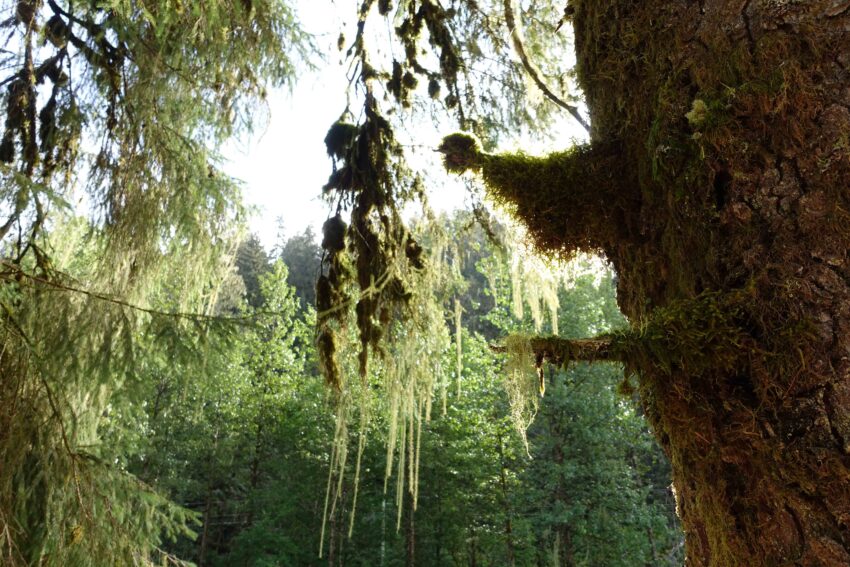Monday, August 14, 2023: Alaska for the last time!
Info:
To Stewart and Hyder there is a road of about 60 km which branches off the Cassier Highway (No. 37) to the west. Both towns are located on the Portland Canal, a fjord that extends more than 100 km inland and at the end of which is Mount Rainey, considered the highest coastal mountain in the world at nearly 2,000 meters.
Stewart in British Columbia currently has about 400 inhabitants; in the neighboring village of Hyder, the southernmost and easternmost settlement of Alaska, only between twelve and eighty people live – depending on whom you ask. Although Hyder officially belongs to the Alaska time zone, no one there cares about that. If you leave Hyder in the direction of Stewart, you have to pass the border post. Every time.


My opinion:
Beautiful! A bit whimsical, but that’s what it’s allowed to be! I went to Stewart and Hyder because I wanted to see the Salmon Glacier and find out what a temperate rainforest looks like. And because I couldn’t imagine leaving Alaska.
Diary:
We are not yet in Stewart, but still in Skagway. After all, I don’t want to make such a big leap, because what lies in between is well worth seeing.


From Skagway the Klondike Highway leads from the sea first to the White Pass at 873 m above sea level. The trail was called the “Dead Horse Trail” in Gold Rush days because so many horses died there, unable to withstand the rigors. The pass is the border between Alaska and British Columbia. So I was asked in the middle of nowhere if I was carrying guns, drugs or lemons. No, but five bananas. Bananas are fine.
The road then continues north into the Yukon, to Carcross. When I was planning the trip, I wondered why a place should be called “Car Crossing.” It doesn’t. Carcross is the abbreviation of Cariboo Crossing, the place where the Cariboo cross the river.


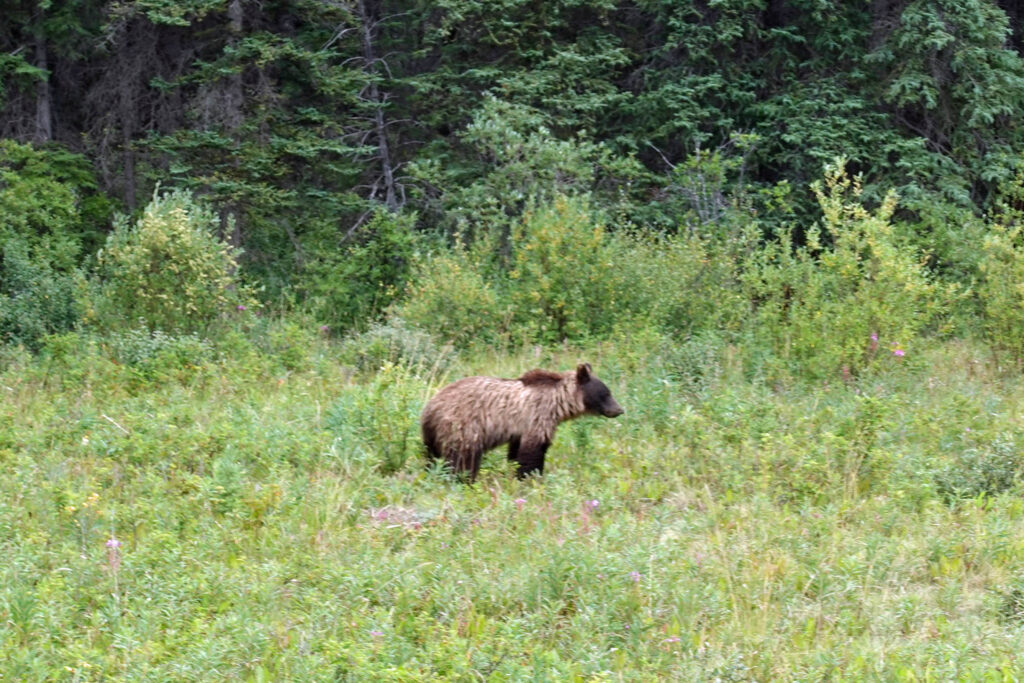

From Carcross you can either continue north towards Whitehorse, which I didn’t do (sigh!), because I turned east and ended up back on the Alaska Highway. Honestly, as nice as it is to drive the Alaska Highway, there is one boring part, namely from Watson Lake to Whitehorse.


Well, I had to get to Watson Lake to take Cassier Highway No. 37 south from there. In a country with so few roads, the choice of routes is somewhat limited. One last time I tried to find the Leonding town sign in Watson Lake’s Sign Post Forest, again without success. But I found out that Watson Lake actually has a lake. It’s called Watson Lake.
The Cassier Highway was incredibly beautiful from the start, the landscape varied and gorgeous! Hardly any settlements. But bears! Lots of bears on and off the road. They comforted me a little about having to leave the Yukon Territory behind.








Actually, I had not intended to drive the 650 km from Watson Lake to Stewart, but since all campgrounds in between were occupied, I arrived in Stewart a day early.



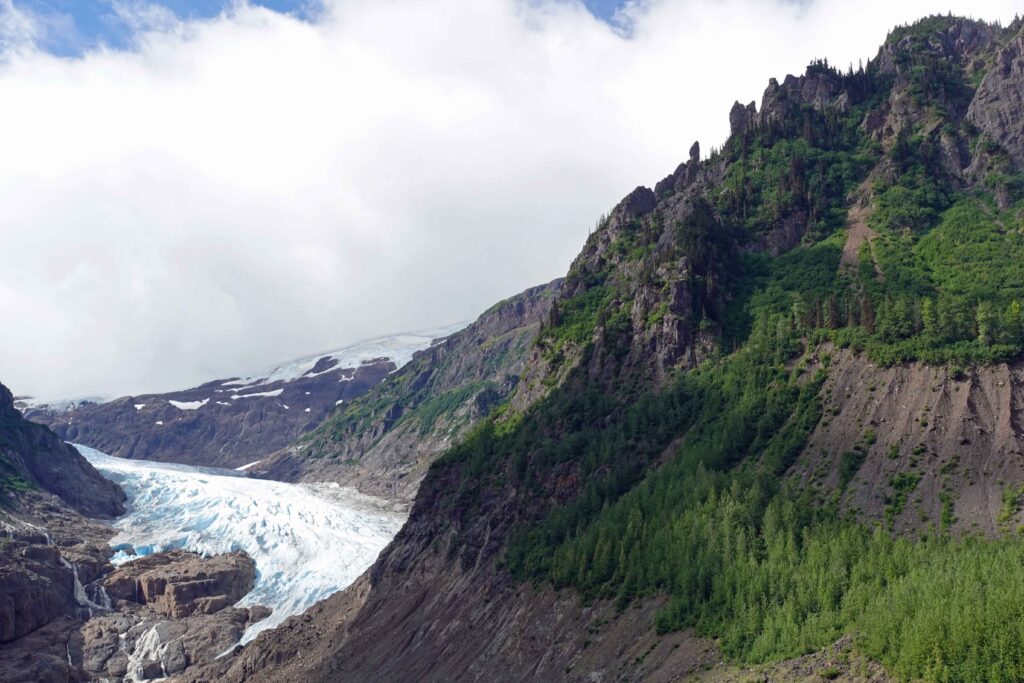
And lo and behold, two travelers with Graz license plates, whom I had already met in Fort Nelson on the drive north on the Alaska Highway, were there too!
In the morning I drove from British Columbia across the border to Alaska, where the town of Hyder is located, known mainly for a bar where you can nail a bill to the wall in case of emergency. 90,000 dollars the walls are already worth!
A few kilometers past Hyder is a lookout point from where bears can be seen catching salmon in the river.


I didn’t really find it surprising that not a single bear showed up while I was there. This was also the case in Haines. Back across the border into Canada, no, I still had no guns, no drugs and no lemons, postcards though, but that was fine. And bananas. I had to explain what the letters in front of my name in the passport meant. Oh, congrats!
I decided to take a guided tour to Salmon Glacier because, first, I had driven enough by myself and, second, the road to the glacier was described as very difficult. It turned out to be something that would have made Annie Way purring contentedly again, but still, I was very happy to be sitting comfortably on the bus, receiving information and not having to shower Annie Way afterwards. Moreover, the company of the couple from Graz, who had also booked the tour, was a very pleasant one.


Salmon Glacier is also retreating. What I found particularly fascinating was a pronounced U valley. U valleys are formed by glaciers, V valleys by water. You can tell by the shape of the landscape whether a valley was formed by a glacier or by water.




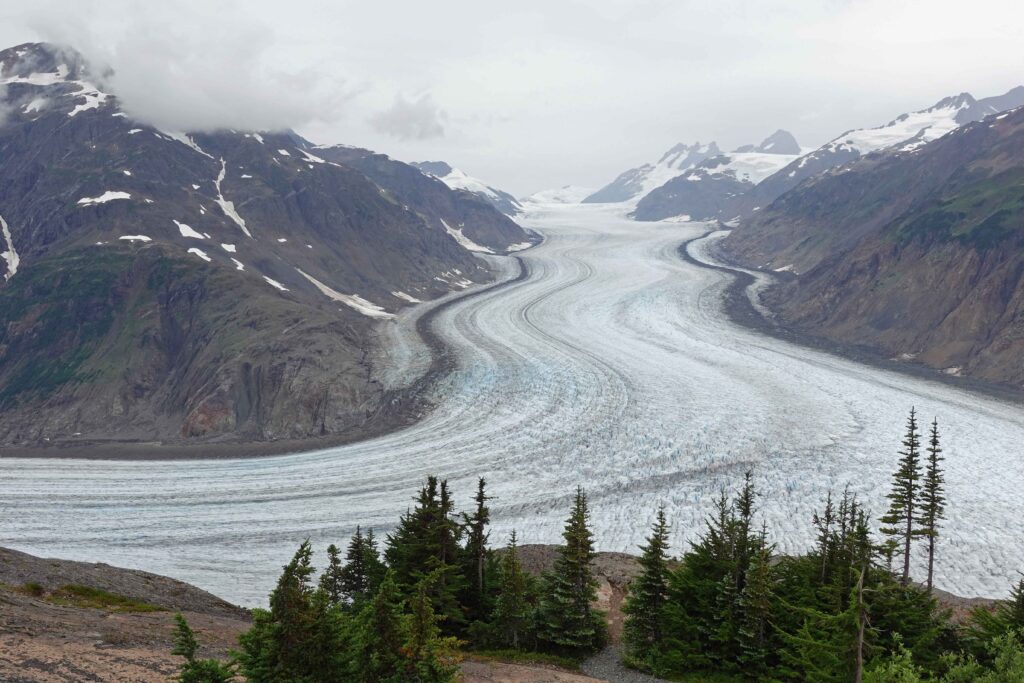

Another interesting thing about Salmon Glacier was that a glacial lake is starting to form again. This was no longer the case for several years. Below, at the mouth of the Salmon River in the fjord, you can see the remains of a bridge that was washed away when the ice dam of the glacial lake broke many years ago and the huge masses of water poured into the valley. This was an exception though, normally the river only rose a meter for a few days.
Iron ore, silver and gold are mined in the area. The road that takes you to the glacier has been built by the companies that operate the mines. Accordingly, heavy vehicles are on the road there.
The Granduc Road leads for a distance of 37 km to an altitude of 4,000 ft / 1,220 m, where the viewpoint is located. And right there they were: lots and lots of mosquitoes! Who would expect that?

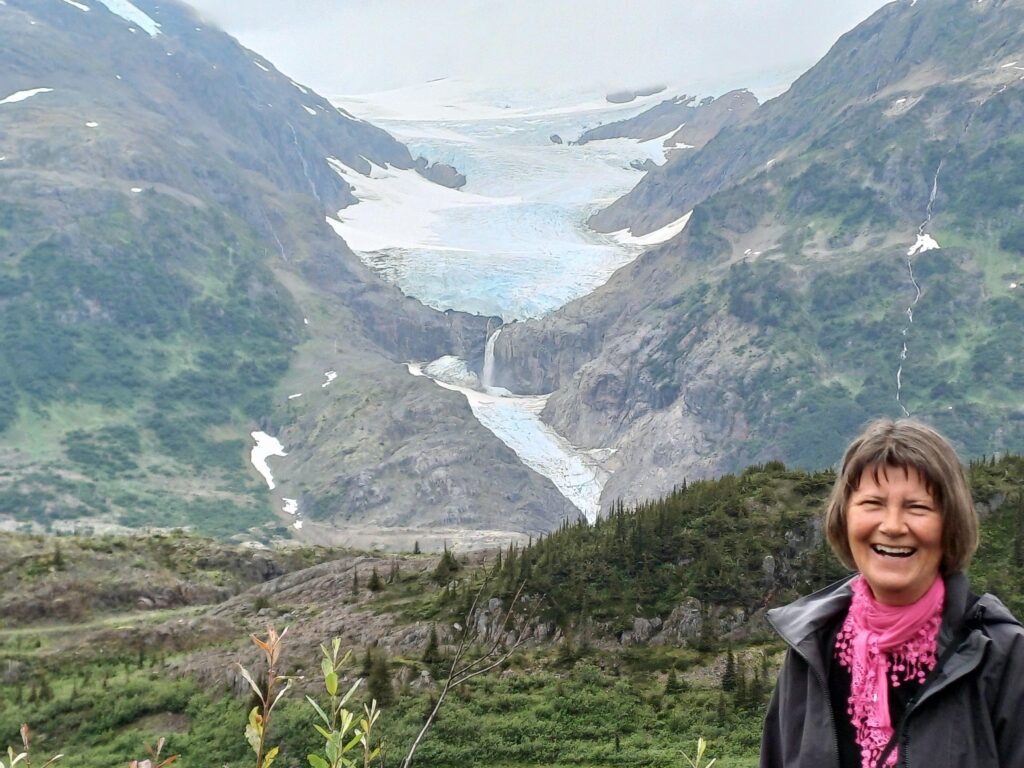
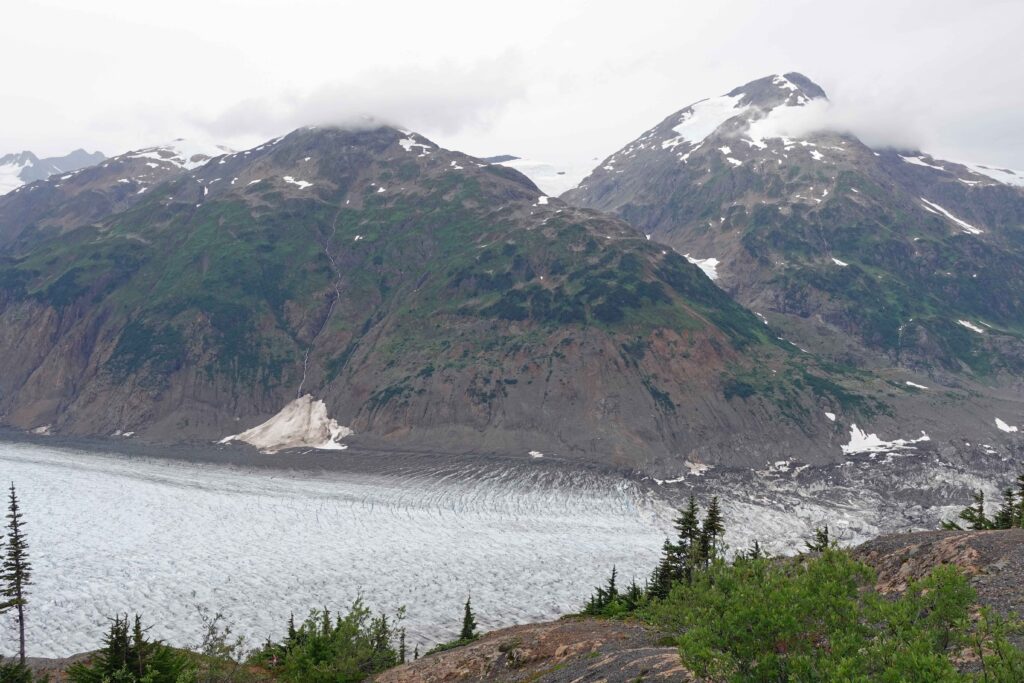

Then back across the border into Canada, although the glacier is in Canada as well. However, no one there is interested in whether I carry lemons.
Actually I wanted to visit the bears in Hyder in the evening, but it started to rain.
For that, I tried again the next morning.
What do you think, were there bears?
Right! Not a single bear.


However, what I found particularly interesting at this point, and what was also one of the reasons I had come to Stewart, was the rainforest. Fish Creek, where the bear viewing point is located, is in the very southeast of America’s largest National Forest, the Tongass. Approximately seventeen million acres / 70,000 km2 it stretches across 1,100 miles / 1,770 km of coastline in Alaska, making it the largest protected temperate rainforest in the world.
A temperate rainforest occurs when temperatures are mild and rainfall is abundant. In the Tongass, there are areas where it rains five meters every year, because the clouds from the Pacific Ocean are blocked by the coastal mountains and rain down on the west side of the mountains. The main species growing here are Sitka Spruce, Western and Mountain Hemlock, and Red and Yellow Cedars. I was especially fascinated by the many lichens and mosses. There is something fairytale about it!



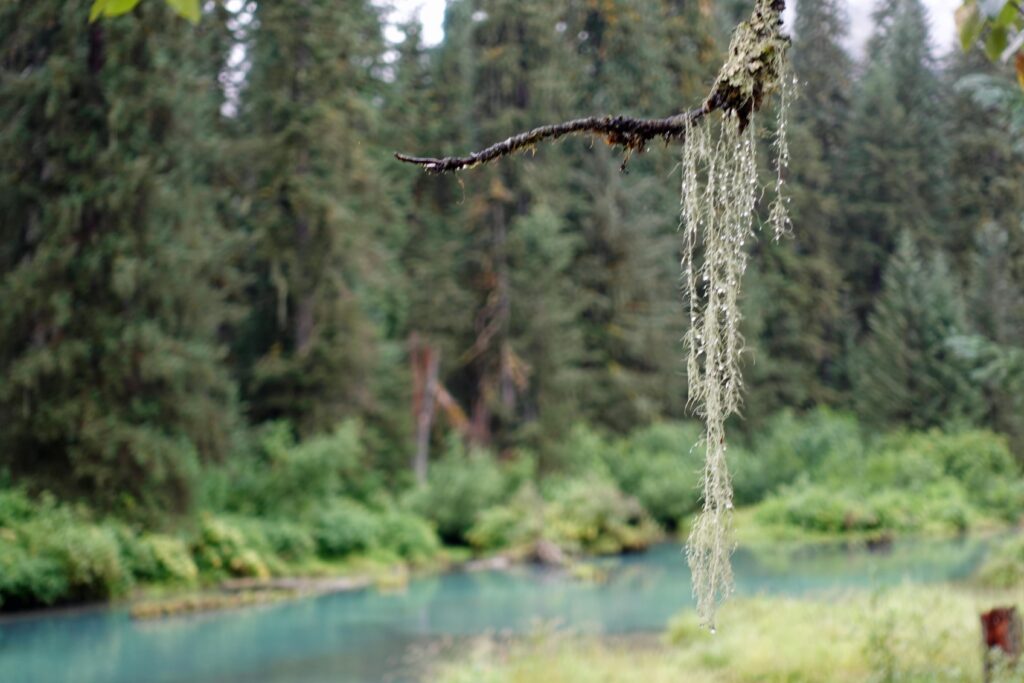
When I entered Canada again, I came to a border guard I already knew. He just said: “Oh yes, the Austrian Masters Degree. Congrats again. Any postcards or lemons or limes this time, or just bananas?” I confirmed, “Just bananas.” With that, he wished me a good trip. I was back in Canada. Along with my bananas.
And with that I had finally left Alaska. For the last time. It turned out to be 33 days instead of the planned three to four weeks at the most.
What was so special about Alaska that I couldn’t and couldn’t tear myself away?
The spectacular scenery, the animals and plants, the glaciers, … That probably all together.
The flowers! They are larger in Alaska than the same species in Austria. And they have a tendency to constantly force themselves into the picture. No sooner do you see a beautiful photo subject than a flower screams, “Wait a minute, I want to be on it, too!” In fact, I tried a few times to get the flowers out of the picture, but then the angle wouldn’t have been as nice. That’s why so many photos with flowers in the foreground. They were just there.
I love the north. But I only got to know it in the summer. I can’t say how I would feel in the polar night in winter. At temperatures I can’t even imagine. But the fact that it does not get dark at night in the summer, I quickly got used to. I missed the stars at night. Alaska has the Big Dipper and the North Star yellow on a dark blue background as its flag. You will probably be able to observe them intensively in the winter. Morning. And in the afternoon again.
The question remains: What was the most beautiful thing in Alaska? – Valdez and Skagway. A little more Valdez than Skagway. And the Kenai Fjord National Park near Seward. The whales. Sea lions. Sea otters. The bold eagles. The glaciers.
What was the most beautiful thing in the Yukon? – The Yukon River and Dawson City. And the vastness. “Larger than Life” is the motto of the territory. That’s how I felt about it, too. People there are still a little more open and friendly and relaxed than in the rest of Canada – and that’s saying something!
Alberta or British Columbia? – Kind of both, but a little more British Columbia.
British Columbia or Alaska? – Alaska! No question!
Alaska or Yukon? – Yukon. In any case, the Yukon.
